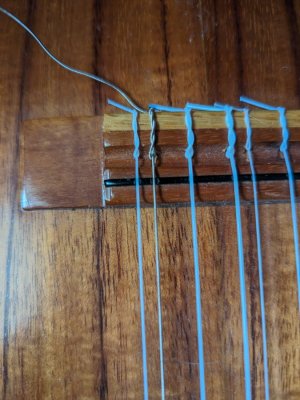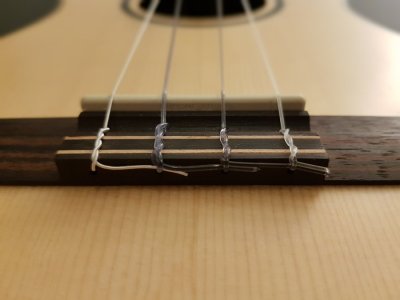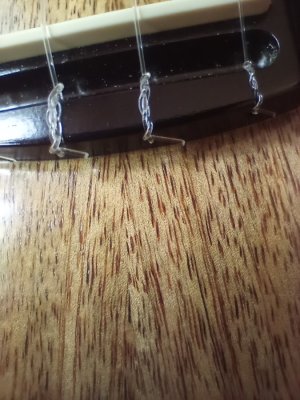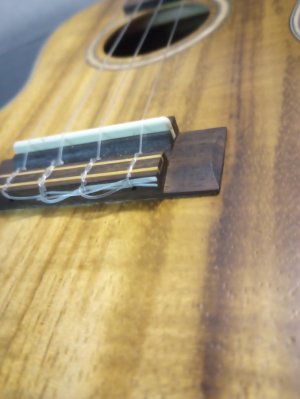- Joined
- May 15, 2021
- Messages
- 1,451
- Reaction score
- 2,690
The wound D and G string on my Pono bari have both spontaneously unwound necessitating a replacement. I don't seem to have the strength to create effective loops when tying wound strings and it's a struggle to achieve an esthetic and accurate tie. I use the quasi surgeon's knot (loop, loop loop)
Is there an easier method to secure wound "tie method" strings?
Here's an image (not my uke) of the bridge type and tie type for those that need a visual.
Is there an easier method to secure wound "tie method" strings?
Here's an image (not my uke) of the bridge type and tie type for those that need a visual.










